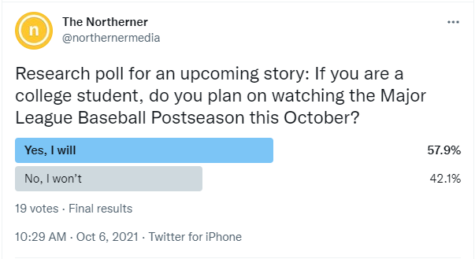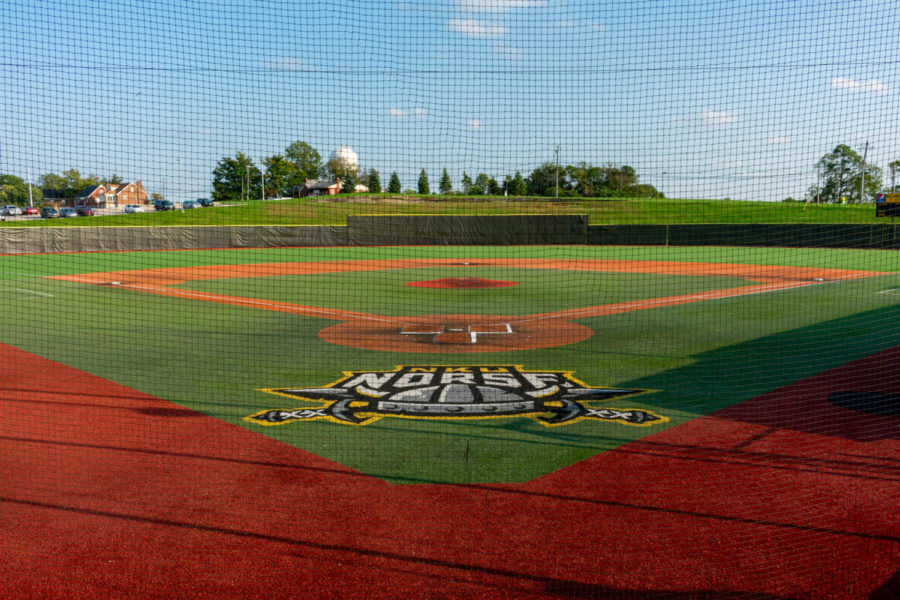A dying quail – how baseball lost touch with its younger audience
As October baseball continues on, see how the NKU community feels about the state of the sport
October 15, 2021
With the Major League Baseball playoffs underway and October baseball in full swing, normally the national pastime would be front and center in everyone’s minds. Discussions about baseball’s biggest stars, questions about how a certain team stacks up with another and dreams of a World Series ring would be thrown around by seemingly just about any sports fan this time of year.
Except this isn’t forty years ago.
Despite rule changes to speed up games, charity programs to open up the sport’s barrier of entry and marketing strategies that have moved away from the rigid customs of years past, baseball has simply failed to adapt to the wants and needs of a younger generation of fans, and MLB has paid the price because of it. According to a poll conducted by LetsAnswers, out of 1,000 U.S. college students that are sports fans, only 15 percent said that they preferred baseball over football, basketball and soccer.
Northern Kentucky University junior and Sports Business Club Co-President Pat McKay suggests that one of the biggest problems that the MLB has at the moment is blackouts of regular season games. Despite owning streaming services like MLB.tv, fans are subject to the dreaded “blackout map” that prevents them from watching out-of-market games because of regional network restrictions.
“They don’t really televise games [nationally] other than Sunday Night Baseball and the occasional game during the week,” McKay said. “You’ve got to get people to watch the games. You’ve got to show them.”
With the MLB playoffs right around the corner and a new generation of players in tow, this could be devastating for the league. In fact, the sport has seen less national engagement with the World Series than ever before over the course of its modern era.
According to FanGraphs, the 2018 Fall Classic saw an 8.3 television rating for an east/west coast big-market matchup between the Boston Red Sox and the Los Angeles Dodgers, while arguably at the sport’s peak, the 1986 Series saw an east coast Red Sox and New York Mets matchup draw nearly 30 million viewers.
As the FanGraphs article mentions, the World Series has simply followed TV trends as the 21st century drew closer and much of the sports content we consumed moved online. However, as NKU senior Logan Dunn puts it, it’s something that MLB needs to work on.
“I feel for what technology is worth, the MLB has a perfect opportunity to capitalize on those resources to expand and entertain their product,” Dunn said. “Kids want to play games on their phones, they want to surf social media, they want to communicate through their phones, so if the MLB could utilize those resources and use the platforms like TikTok [or] a reward program on the MLB app for attending games or engaging with the team, they could really grab the attention of the younger generation.”
MLB has tried methods in the past to expand their social media presence. Deals with companies like YouTube and Facebook to exclusively broadcast games on their respective streaming platforms have created opportunities to put more eyes from Gen Z and millennials onto the product. Teams like the Cincinnati Reds have also tried promotions in recent years like college nights to attract local university students.
These strategies may be effective to an extent: in a poll conducted by The Northerner on Twitter that had a small subset of votes, 58% of college students said that they will be watching the MLB playoffs this year.
 “Especially now with all of these streaming services we have, I feel like that is a step in the right direction,” McKay said. “You’ve got to get the product out there by any means necessary.”
“Especially now with all of these streaming services we have, I feel like that is a step in the right direction,” McKay said. “You’ve got to get the product out there by any means necessary.”
But as NKU sports business professor Bridget Nichols said, college may be too late to attract a larger audience for baseball.
“Truthfully, the college student is not really young enough,” Nichols said. “Professional leagues must be able to reach young people as early as possible to cultivate a loyal fan.”
Regardless of the source of the problem, MLB and Commissioner Rob Manfred need to find a way out of the bases-loaded jam they’ve been forced into by the other “Big Three” sports in the U.S., or it could be game over.

